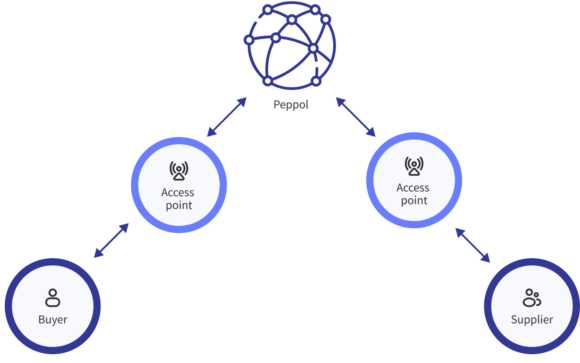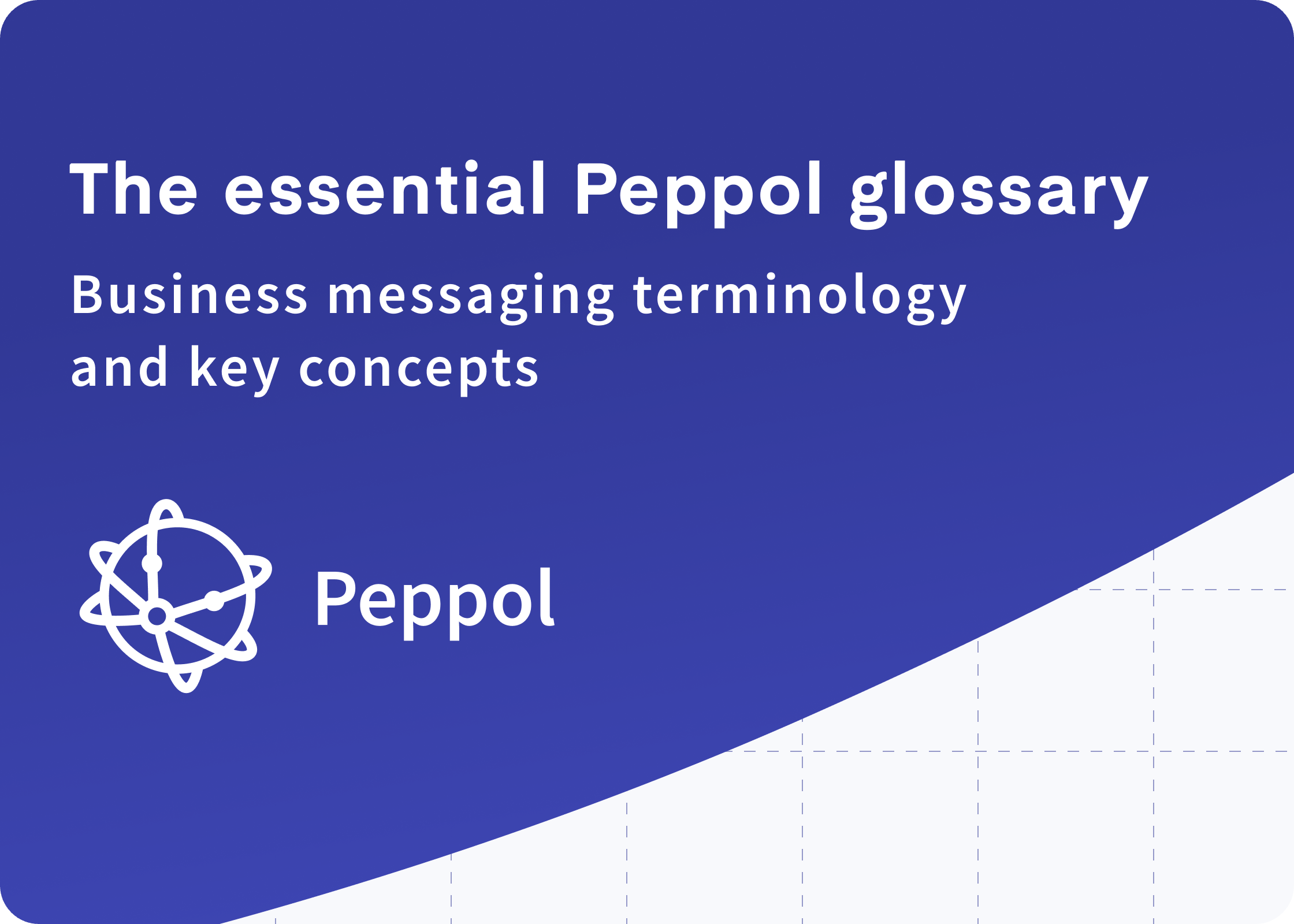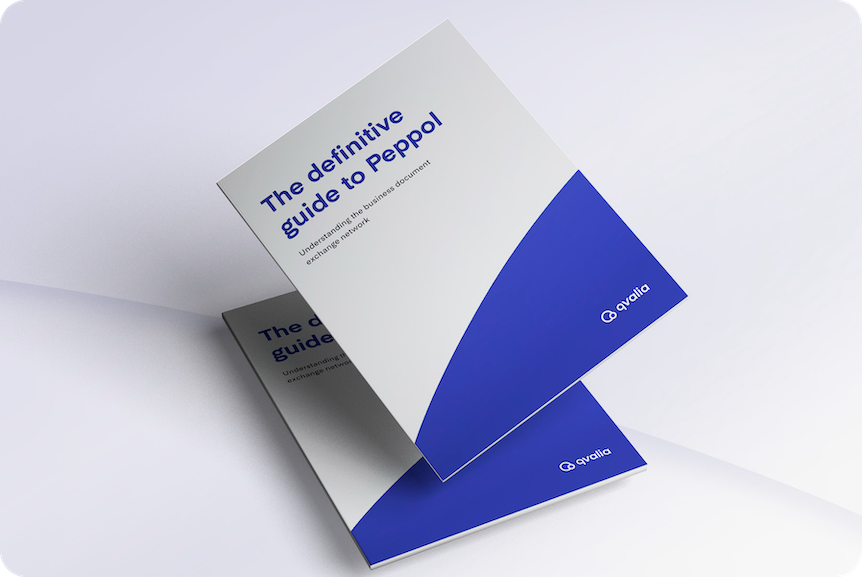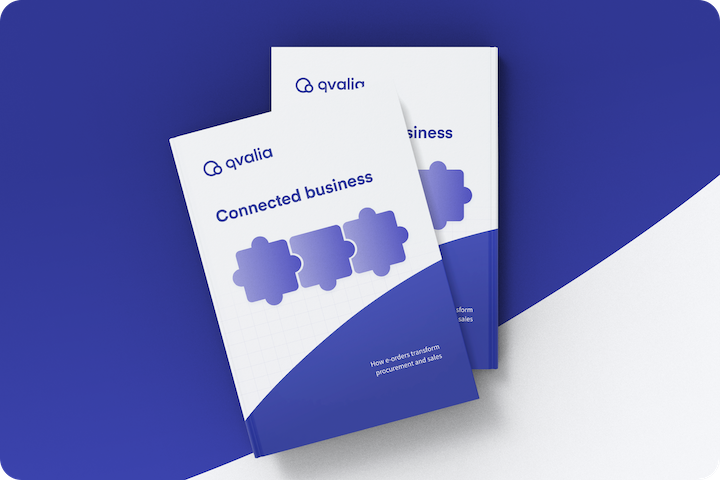
Peppol, short for Pan-European Public Procurement On-Line, is an open and standardized network designed to simplify B2B transactions with, for example, electronic invoicing, procurement, and other business documents. Created initially in the European Union, the network is rapidly gaining global traction due to its straightforward and efficient approach to electronic business transactions.
From point-to-point EDI to Peppol: The evolution of electronic business messaging
Historically, invoices and other business documents were manually created, printed, and physically sent, resulting in a time-consuming, error-prone process. By the late 20th century, Electronic Data Interchange (EDI) dramatically changed how businesses exchanged financial documents, beginning with the first EDI message—a shipping manifest sent by telex in 1965.
Value-Added Networks (VANs) later emerged to enable EDI by acting as intermediaries, facilitating electronic communication between businesses. Despite VANs offering critical features such as encryption, auditing, and data management, they presented significant drawbacks, including high setup costs, complex integration, and limited flexibility, particularly affecting small to medium-sized enterprises (SMEs).
Limitations of traditional networks
Traditional business messaging systems, often described as “closed networks,” require businesses to establish an agreement with a VAN operator. These operators must maintain interoperability agreements, continuously manage technical configurations, and perform format conversions between VANs to enable exchange. These requirements create substantial barriers for usability and lead to higher operational costs.
Why Peppol?
Peppol addresses these traditional limitations by providing a universally accessible and standardized electronic business network. Unlike VAN-based or direct EDI connections, Peppol offers:
- Simplified integration and connectivity.
- Reduced transaction and operational costs.
- A globally scalable infrastructure, now active beyond Europe in countries such as Australia, New Zealand, and Singapore.
Its growth and governance are managed by OpenPeppol, a nonprofit organization that ensures that the network meets evolving user and technological needs.
Learn more about Peppol’s advantages and how it simplifies e-invoicing.
How Peppol works – The infrastructure explained
The network’s effectiveness relies on several critical building blocks:
- Standardized message formats (Peppol BIS): Defined formats for invoices, orders, catalogs, and responses.
- Common digital infrastructure: A uniform technological foundation for seamless communication.
- Central registry: Facilitates easy identification and messaging capabilities between users.
- Clear guidelines: Standards and rules simplifying interactions among network participants and providers.
Businesses exchange messages via certified Peppol service providers acting as access points, which connect directly to the network, removing the need for complicated agreements or costly technical setups.
Peppol utilizes a four-corner model. In this structure, sender and receiver connect through certified intermediaries known as Peppol Access Points, ensuring secure, reliable, and interoperable transactions without direct connections between trading partners.

Unlike traditional Value-Added Networks (VANs), Peppol’s open model eliminates the need for individual agreements or technical setups between operators, significantly reducing integration complexity, lowering costs, and increasing accessibility for all organizations.
Peppol IDs and identifiers
The network relies on unique identifiers (Peppol IDs) for message routing:
- Format example: “0007:5567321707” for Swedish organization numbers.
- Format example: “0088:1234567891234” for GLN numbers.
A Peppol ID is mandatory for receiving e-invoices and documents, but not required for sending them, streamlining initial interactions and reducing barriers to adoption.
Find companies registered on the network using our free Peppol ID search tool.

Peppol BIS message types and profiles
The network’s standardized messaging protocols enable a comprehensive exchange of business messages.
Message profiles in Peppol define standardized sets of rules and data requirements tailored for specific business scenarios, such as invoicing or ordering. Message types, on the other hand, refer to the actual categories of messages (like invoices, credit notes, or order responses) exchanged within these profiles.
Here are the most common types and profiles:
- BIS Billing: Standard e-invoice format for seamless invoicing.
- BIS Credit Note: For issuing credit invoices or adjustments.
- BIS Invoice Response: Provides invoice status updates.
- BIS Order Only, Ordering, Advanced Ordering: Varied complexity levels to handle procurement processes from basic order placements to sophisticated two-way communications.
- BIS Despatch Advice: Shipping and logistics notifications.
- BIS Catalogue: Product catalogs for simplified product data sharing.
- BIS Punch Out: Interactive B2B e-commerce shopping carts.
Practical benefits of using Peppol
The network delivers tangible advantages:
- Interoperability: Easy communication across diverse systems and geographies.
- Efficiency: Quick setup without custom agreements or technical complications.
- Cost-effectiveness: Lower maintenance and often free transaction costs.
- Compliance: Ensures compliance with EU regulations and other international standards through rigorous validation.
[Video] The Peppol network basics
Getting started with Peppol
Joining Peppol involves simple steps:
- Select and register with a certified Access Point provider, also called Peppol service provider.
- Integrate Peppol functionality into existing ERP systems or use a web app. Follow this Peppol API guide for a swift integration.
- Obtain your unique Peppol ID to receive e-documents.
This process is straightforward, cost-effective, and typically requires no specialized technical knowledge, as simple as emailing.
Contact us
Qvalia is complete Peppol service provider. Manage, automate, and visualize your sales and purchase transactions. Simplify your access and maximize the benefits for your business.
 Easy integration with your existing ERP
Easy integration with your existing ERP
 Complete support for all message types
Complete support for all message types
 Advanced transaction logging, data management, and automation tools
Advanced transaction logging, data management, and automation tools
 Portal solutions for suppliers with e-invoicing and e-order capabilities
Portal solutions for suppliers with e-invoicing and e-order capabilities
 Reliable, secure, and compliant transaction handling
Reliable, secure, and compliant transaction handling
Learn more about how our solutions can streamline your Peppol transactions, contact us today.





